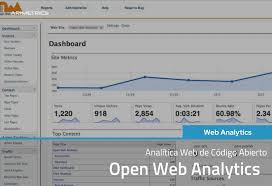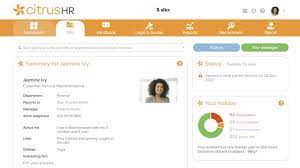Optimising Agency Operations: The Power of Agency Management Software
Revolutionising Agency Management with Software Solutions
In today’s fast-paced digital world, agencies are constantly seeking ways to streamline their operations, enhance productivity, and deliver exceptional results to clients. Agency management software has emerged as a game-changer, offering a comprehensive solution to meet the diverse needs of modern agencies.
Efficient Workflow Management
Agency management software provides a centralised platform for managing projects, tasks, and resources efficiently. From project planning and tracking to resource allocation and client communication, these tools empower agencies to streamline their workflow and improve collaboration among team members.
Client Relationship Management
Building strong relationships with clients is crucial for agency success. Agency management software comes equipped with robust CRM features that enable agencies to track client interactions, manage leads and opportunities, and deliver personalised services tailored to client needs.
Financial Tracking and Reporting
Managing finances is a critical aspect of agency operations. Agency management software simplifies financial tracking by providing tools for budgeting, invoicing, expense tracking, and financial reporting. By gaining insights into financial performance, agencies can make informed decisions to drive profitability.
Data Security and Compliance
Protecting sensitive agency data is paramount in today’s digital landscape. Agency management software offers advanced security features such as data encryption, user access controls, and compliance monitoring to safeguard confidential information and ensure regulatory compliance.
Scalability and Customisation
Every agency is unique with its own set of requirements. Agency management software offers scalability and customisation options to adapt to the evolving needs of agencies of all sizes. Whether it’s adding new features or integrating third-party tools, these solutions can be tailored to suit specific business requirements.
The Future of Agency Management
As technology continues to evolve, the role of agency management software will become increasingly pivotal in driving operational efficiency and delivering superior client experiences. By embracing these innovative solutions, agencies can stay ahead of the curve and achieve sustainable growth in a competitive market landscape.
Essential Tips for Optimising Your Agency Management Software
- Choose a software that aligns with your agency’s specific needs and goals.
- Ensure the software is user-friendly to facilitate easy adoption by your team.
- Integrate the software with other tools your agency uses for seamless workflow.
- Regularly update and maintain the software to ensure optimal performance.
- Train your team on how to effectively use all features of the software.
- Utilize reporting and analytics tools within the software to track performance metrics.
- Secure sensitive client data by implementing robust security measures in the software.
- Customize workflows and processes in the software to match your agency’s unique requirements.
- Seek feedback from your team on their experience using the software to make necessary improvements.
Choose a software that aligns with your agency’s specific needs and goals.
When selecting agency management software, it is vital to choose a solution that aligns closely with your agency’s specific needs and goals. By identifying the key requirements of your agency, such as project management, client relationship management, or financial tracking, you can ensure that the software meets these criteria effectively. Tailoring the software to address your agency’s unique challenges and objectives will not only enhance operational efficiency but also drive productivity and success in achieving your business goals.
Ensure the software is user-friendly to facilitate easy adoption by your team.
To maximise the effectiveness of agency management software within your organisation, it is imperative to ensure that the chosen software is user-friendly. By prioritising user-friendliness, you can facilitate seamless adoption by your team, enabling them to quickly grasp the software’s functionalities and integrate it into their daily workflow. An intuitive interface and straightforward navigation not only enhance user satisfaction but also promote productivity and efficiency across the agency. Investing in user-friendly software can lead to smoother implementation and a higher likelihood of successful utilisation by all team members.
Integrate the software with other tools your agency uses for seamless workflow.
To maximise the efficiency and effectiveness of agency management software, it is essential to integrate the system with other tools that your agency utilises. By seamlessly connecting different software applications, agencies can create a cohesive workflow that enhances collaboration, automates processes, and improves overall productivity. Integrating agency management software with tools such as project management platforms, communication systems, and analytics tools can streamline operations, reduce manual tasks, and provide a holistic view of agency activities for better decision-making. Embracing integration ensures that your agency leverages the full potential of technology to optimise its workflow and deliver exceptional results to clients.
Regularly update and maintain the software to ensure optimal performance.
To maximise the efficiency and effectiveness of agency management software, it is essential to adhere to the practice of regularly updating and maintaining the software. By staying current with updates, agencies can ensure that their software operates at optimal performance levels, benefiting from bug fixes, security patches, and new features that enhance usability. Regular maintenance not only helps prevent system vulnerabilities but also guarantees a smooth and seamless user experience, enabling agencies to leverage the full potential of their management software for improved productivity and client satisfaction.
Train your team on how to effectively use all features of the software.
To maximise the benefits of agency management software, it is essential to train your team on how to effectively utilise all features of the software. By providing comprehensive training sessions, you empower your team to harness the full potential of the software, enhancing their efficiency and productivity. Ensuring that every team member is proficient in using all aspects of the software not only streamlines workflow processes but also fosters a culture of continuous learning and improvement within the agency.
Utilize reporting and analytics tools within the software to track performance metrics.
To enhance agency performance and make informed decisions, it is essential to leverage the reporting and analytics tools available within agency management software. By utilising these tools, agencies can track key performance metrics, gain valuable insights into project progress, resource allocation, client engagement, and financial performance. This data-driven approach enables agencies to identify trends, measure success against predefined goals, and make strategic adjustments to optimise operations and drive business growth effectively.
Secure sensitive client data by implementing robust security measures in the software.
To ensure the protection of sensitive client data, it is essential to implement robust security measures within agency management software. By incorporating advanced encryption techniques, user access controls, and compliance monitoring features, agencies can safeguard confidential information from potential security threats. Prioritising data security not only enhances client trust but also ensures regulatory compliance, demonstrating a commitment to maintaining the highest standards of confidentiality and integrity in handling client data.
Customize workflows and processes in the software to match your agency’s unique requirements.
To maximise the effectiveness of agency management software, it is essential to customise workflows and processes within the system to align with the specific needs and objectives of your agency. By tailoring the software to match your agency’s unique requirements, you can enhance operational efficiency, improve collaboration among team members, and ultimately deliver better results for your clients. Customisation allows you to streamline workflows, automate repetitive tasks, and ensure that the software adapts seamlessly to your agency’s workflow, enabling you to work more effectively and achieve greater success in managing projects and client relationships.
Seek feedback from your team on their experience using the software to make necessary improvements.
To enhance the effectiveness of agency management software, it is essential to seek feedback from your team regarding their experience using the software. By actively listening to their insights and suggestions, you can identify areas for improvement and make necessary adjustments to optimise the software’s functionality. This collaborative approach not only fosters a culture of continuous improvement within the agency but also ensures that the software aligns with the specific needs and preferences of your team members, ultimately enhancing overall productivity and efficiency.





